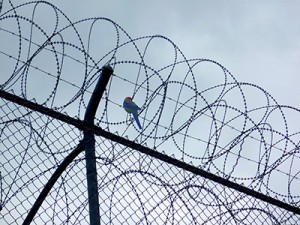Independent monitoring of conditions in institutions and residential facilities that house vulnerable people is used as a protective measure against abuses of power. It also serves to improve the quality of care and to make more transparent what is hidden.
In 2006 the Office of the Guardian commenced regular visits to residents in the youth training centres. Advocates from the Office visit the residents in one unit in each of the centres each month and twice a year they conduct audits of records that relate to the safety of residents.1 Young people can also phone an advocate at other times.

Despite the infrequency of visits, significant changes to conditions have resulted from the cooperative relationship between the Office and the Department. A major change is the construction of a new detention centre which will open in September and replace the sub-standard Magill centre. Other changes include the introduction of a complaints process and residents’ advisory groups, a shift in the emphasis of staff training from operations to relationship-based skills, shorter periods for residents in detention rooms and increased hours for the health services. Investigations of allegations of abuse are now concluded more promptly and access to independent advocacy has improved.
Recent media reporting of alleged assaults of staff at both centres, and the consequent investigation, will draw attention to a few specific incidents within a period of a few months but will not fairly represent the conditions or practices that increase or diminish the likelihood of violent incidents.
The Office’s regular monitoring and feedback on critical incidents shows that the vast majority of violent acts are not directed at staff, but at other residents or themselves (self-harm). The likelihood of violent incidents is greatly influenced by the communication skills of staff and by individualised intervention for the residents. The re-occurrence of violent outbursts depends on the staff’s response to the first incident. Where a resident understands that punishment (consequences) is proportional, not arbitrary, is reviewed by management and is open to appeal, it is less likely to be repeated. Debriefing with residents following an incident also helps them understand the impact of their behaviour and learn that there are other ways to deal with strong emotions. Violent incidents are reduced by attention to the social atmosphere and the emotional state of residents, and by consistency and fairness in the application of rules.
The Office’s tracking over six years of critical incidents indicates that:
The rate of violent incidents has risen over that time, but only at the Magill centre.2
The rate of incidents in any six month period can rise or fall significantly. This is usually as a result of one or two residents with very high needs, management inattention to resident and staff dynamics, or the absence of professional advice and intervention to help staff in responding to individual needs of residents.
The rate of physical restraint of residents as a response to incidents rose at a steeper rate than the number of incidents. This suggests that the impact of a new approach to behaviour management involving less use of physical restraint has yet to be realised. Overall, physical restraint was more likely to be used in a critical incident at the Cavan centre than at the Magill site.
In May 2009 Australia signed, but has not yet ratified, the Optional Protocol to the United Nations Convention Against Torture. The Optional Protocol allows for international inspection of all places of detention. In 2009, the then federal Attorney-General Robert McClelland noted that a ‘national preventative mechanism’ will be required so that all detention facilities are monitored by an independent body. Consultation with the states and territories on how this will be done has commenced.
1. As at 1 July 2012 the Office now combines visiting residents once a month with an audit of records.
2. It is possible that the auditing of records has resulted in improved recording of incidents so that part of the rise is attributable to this.
For our latest articles and opinion pieces, follow us on Twitter.
